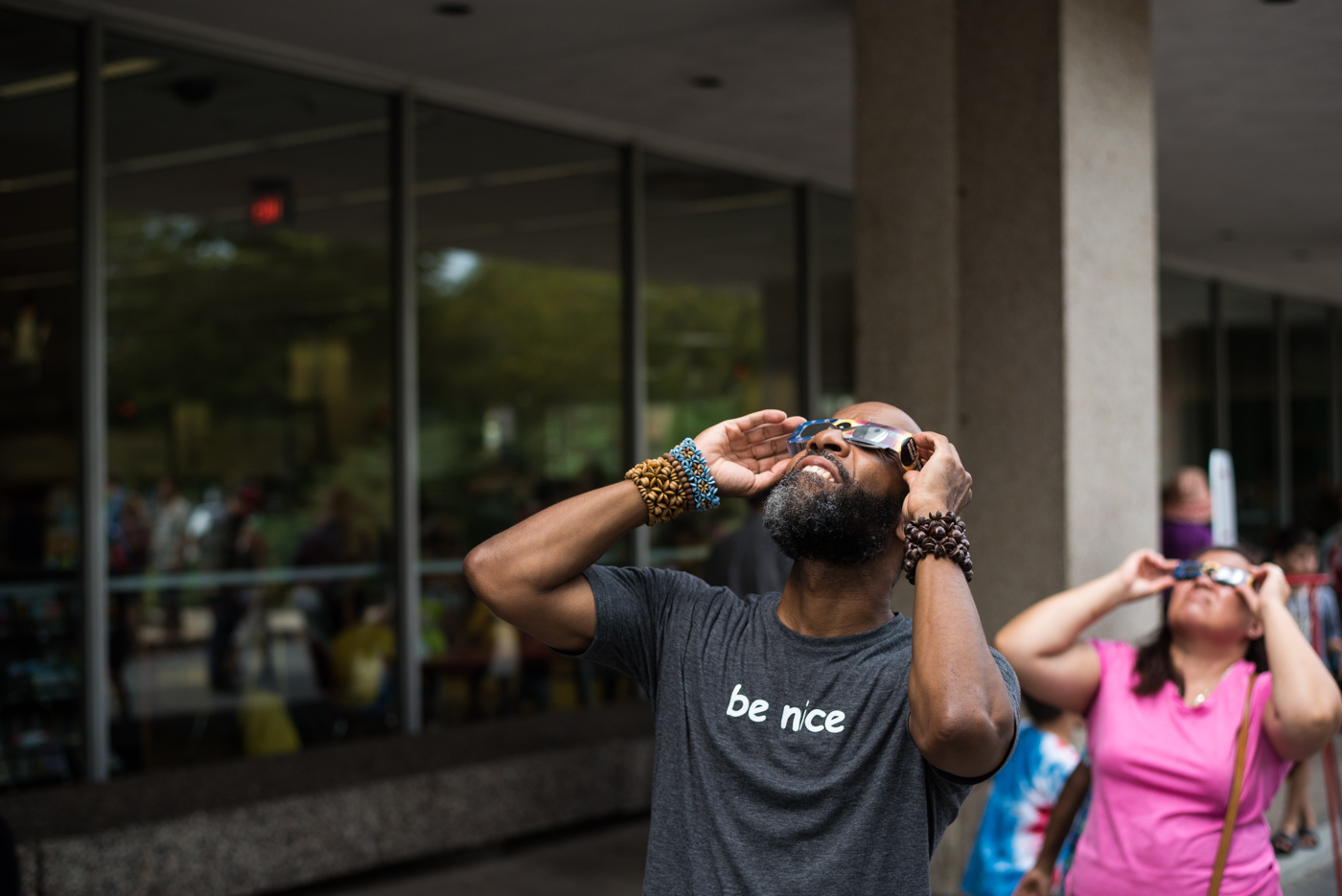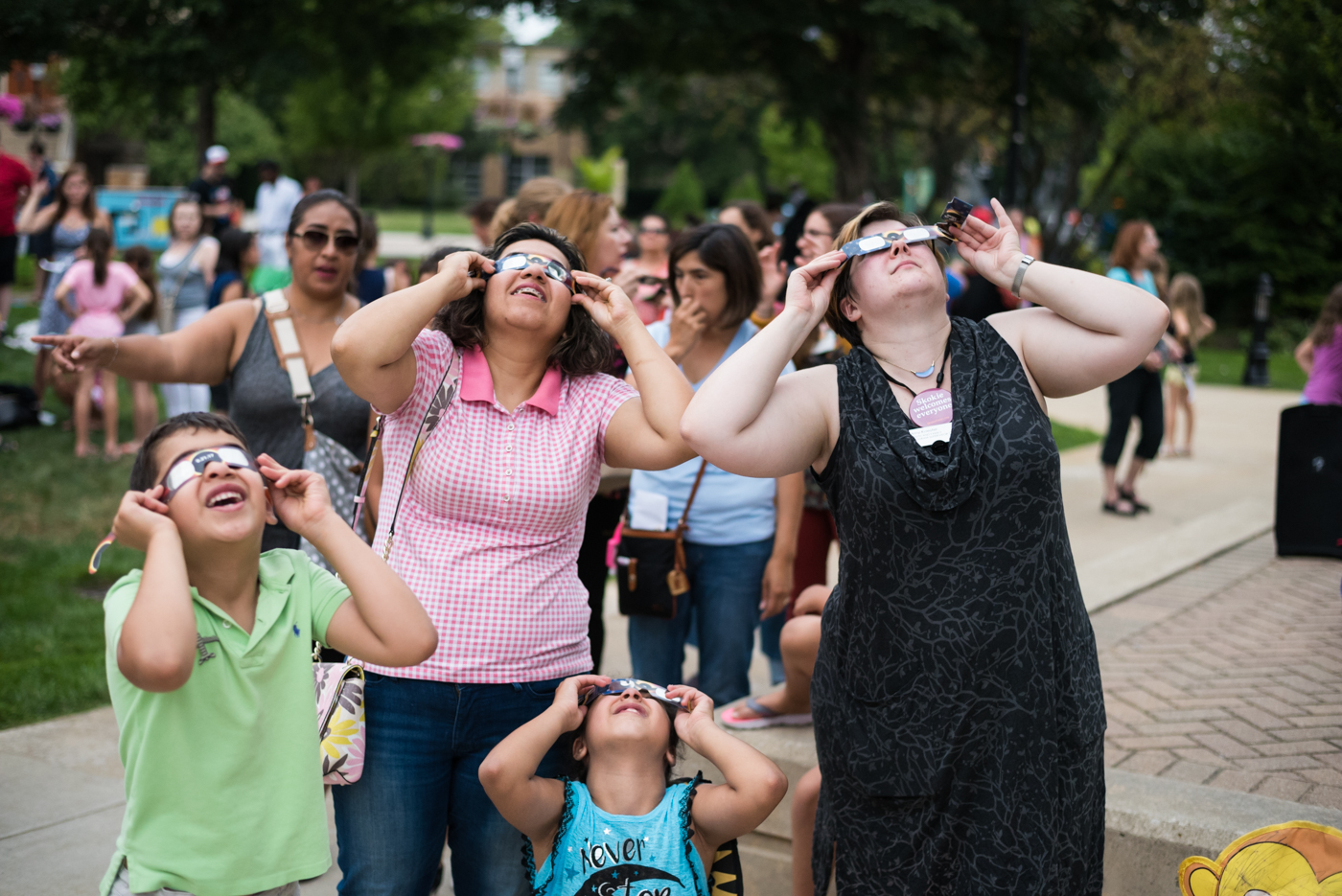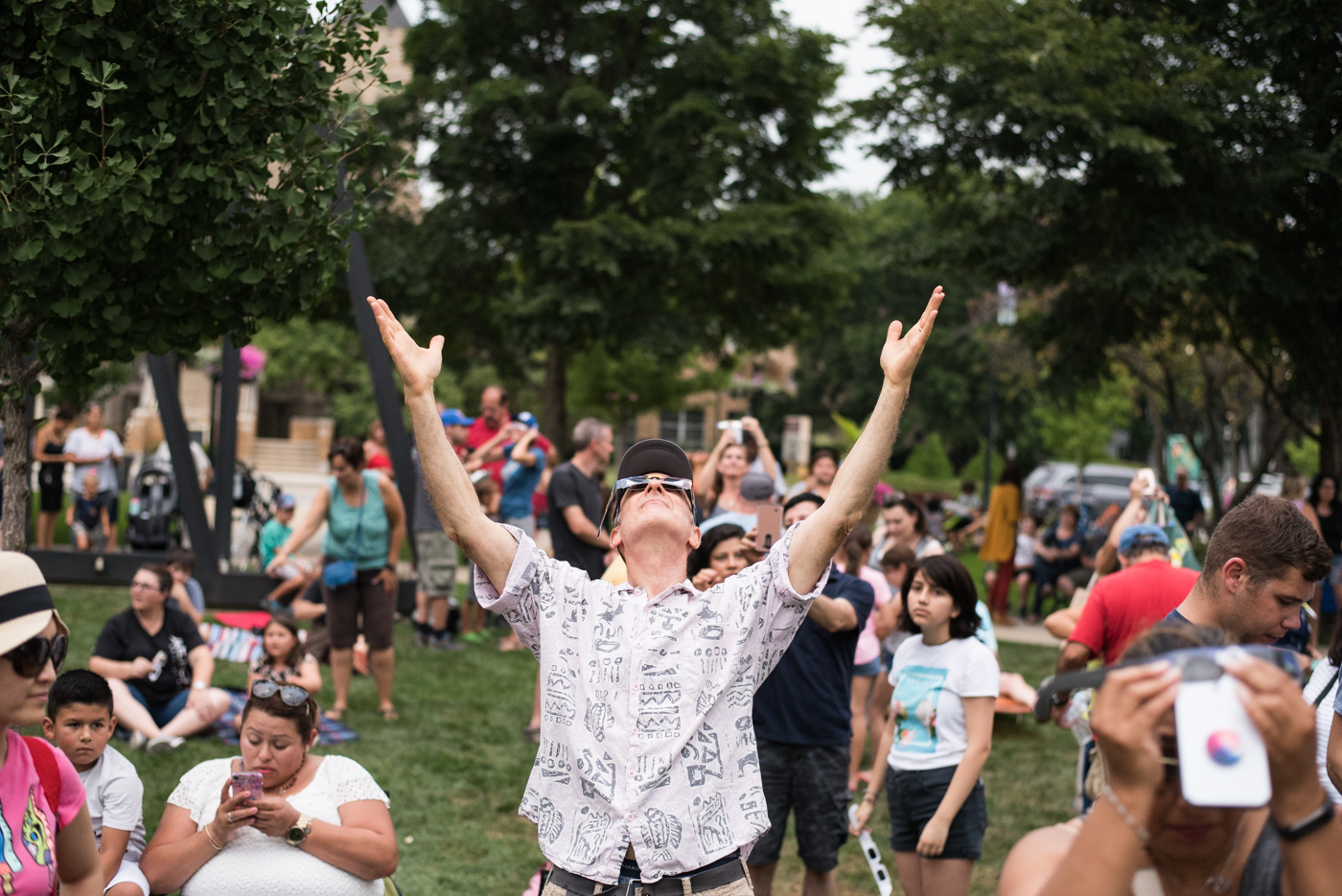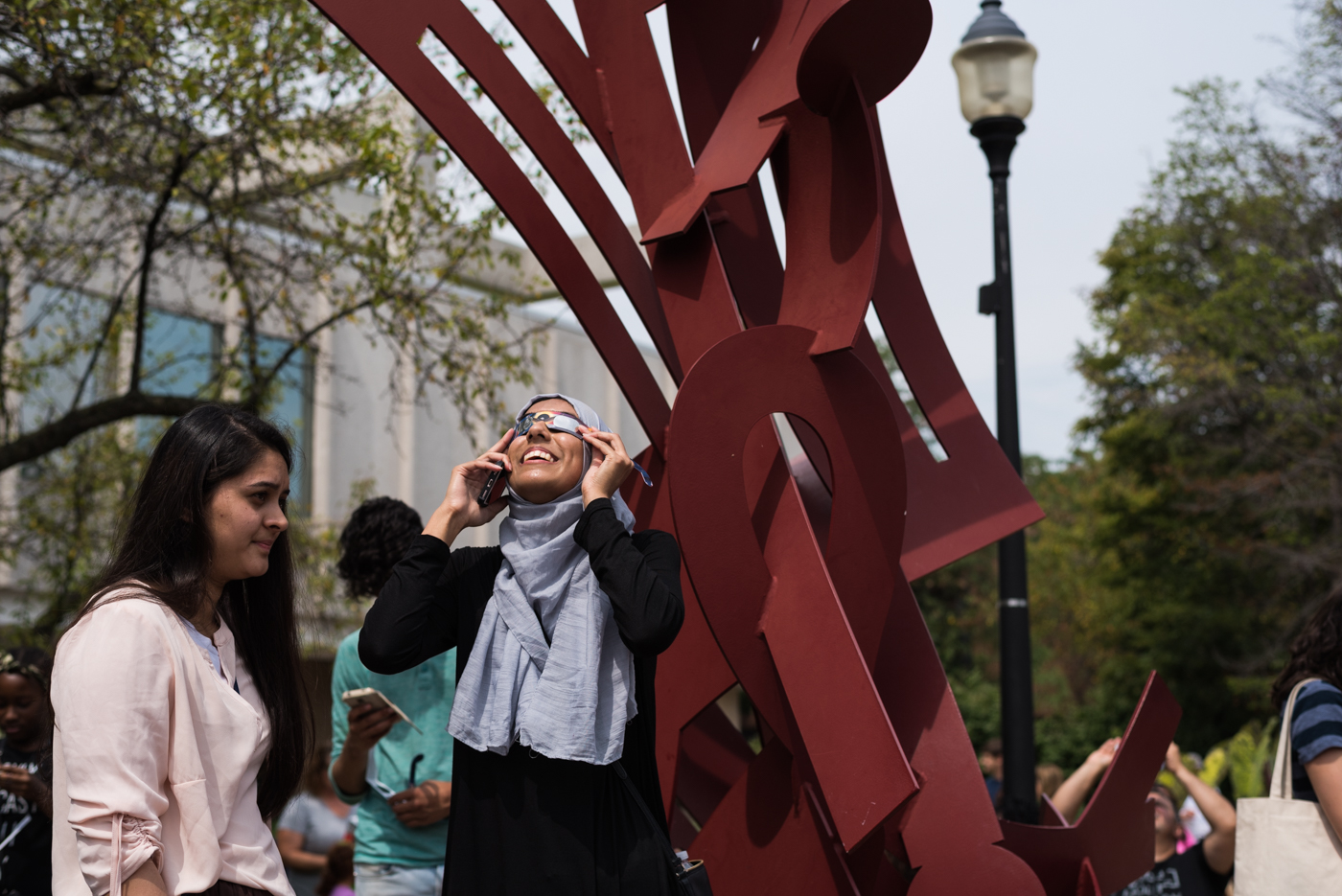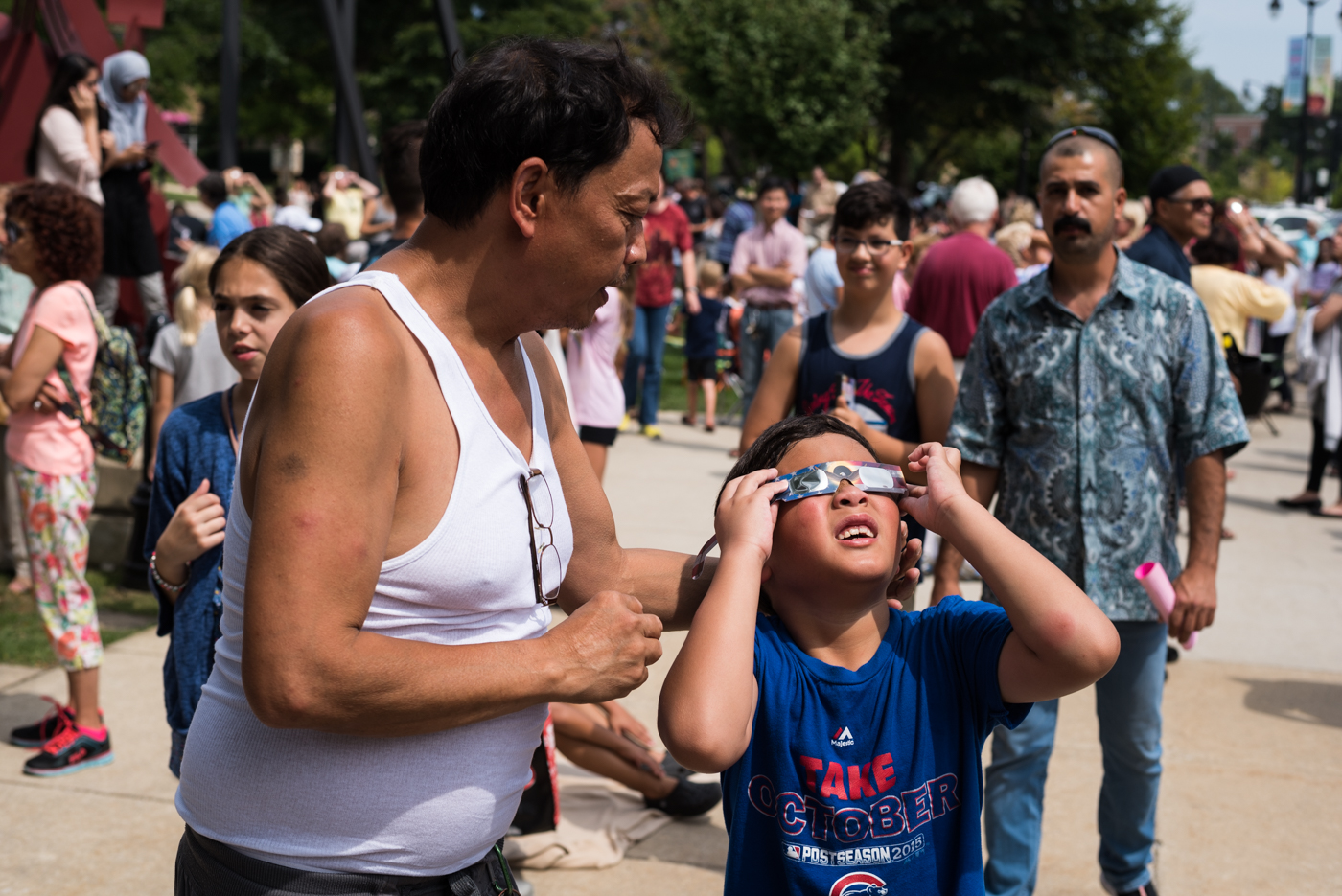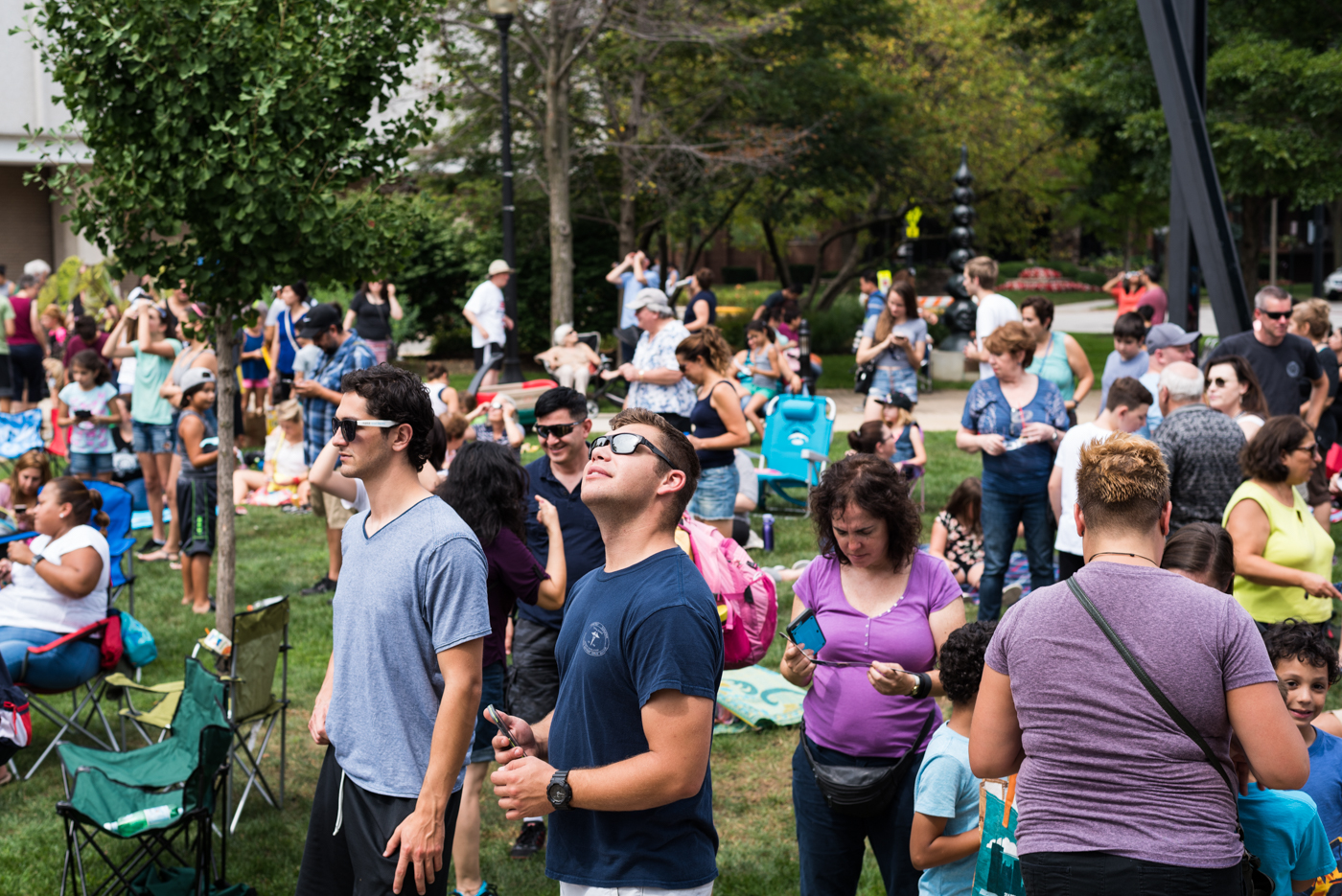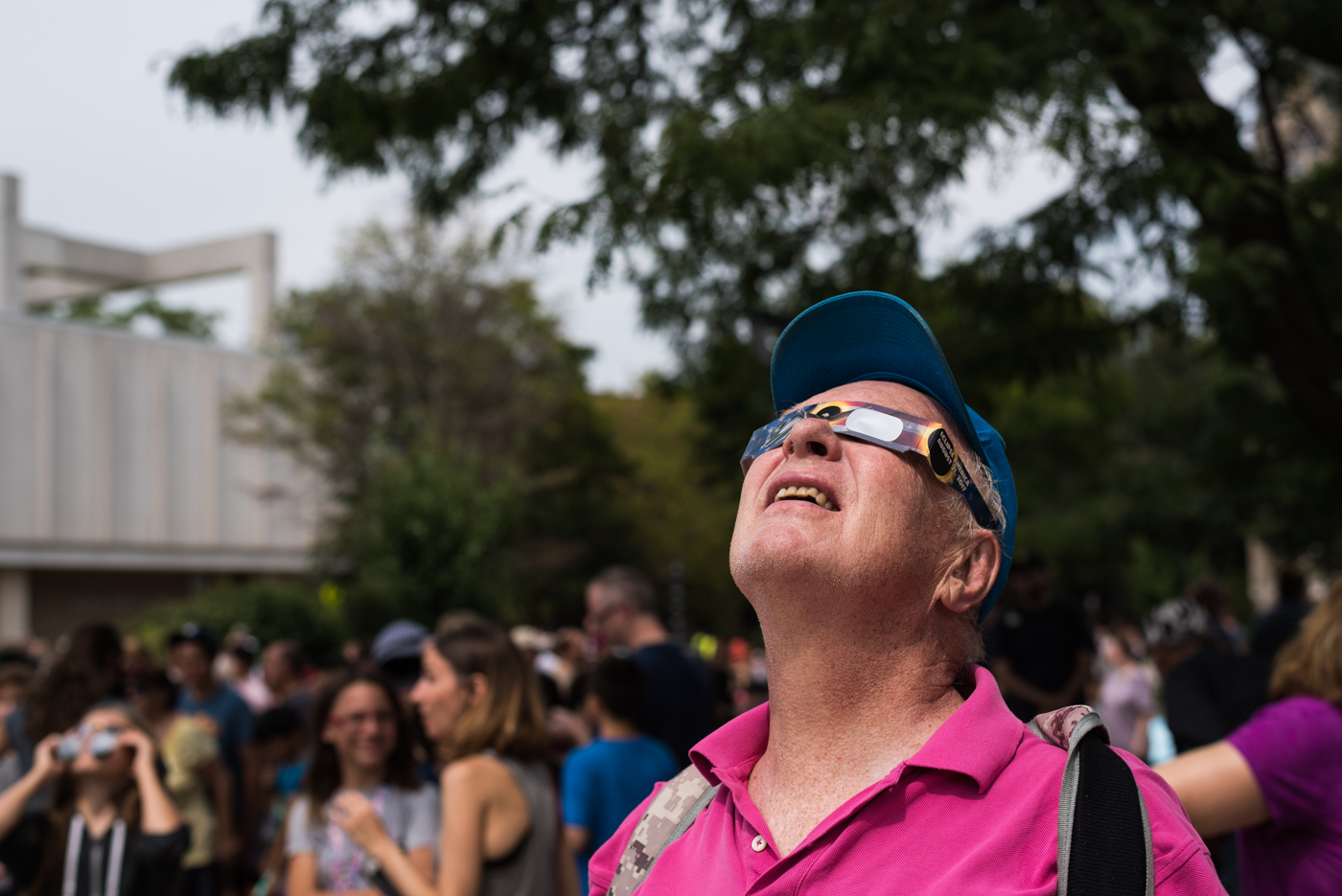Skokie Solar Eclipse Party
August 22, 2017
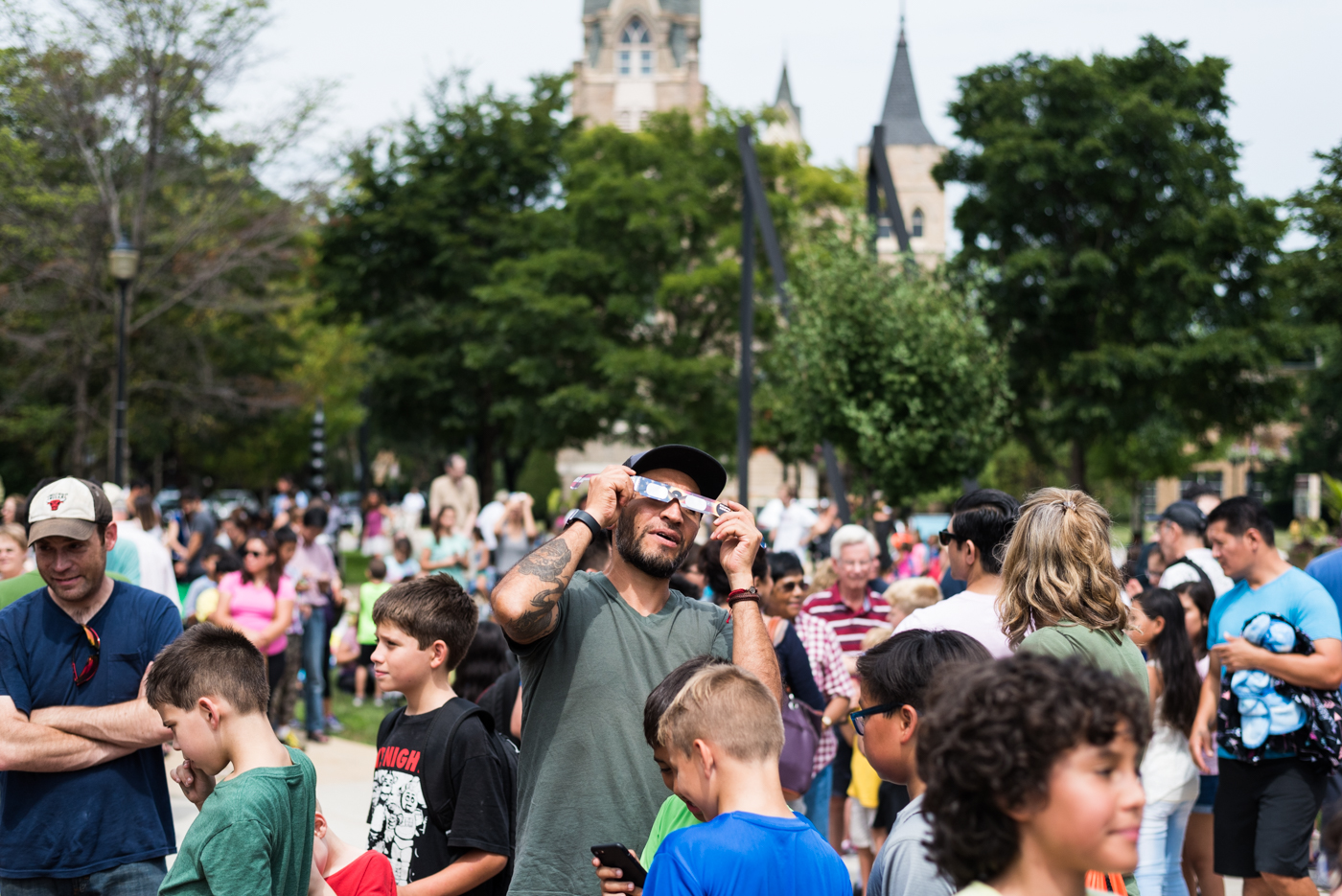
Just after noon on Monday, August 21, the Skokie community joined others across the country in viewing the astronomical event of the year: the solar eclipse. The library provided 300 free, safe viewing glasses for participants—a number dwarfed by the 1,123 people who ultimately participated. In the spirit of community, however, everyone cheerfully shared their glasses with others so that all could participate. It was an afternoon filled with both fun and astronomical awe as we gazed toward the sun as it was being obscured by the moon.
Solar eclipse viewing party
During the Solar Eclipse Party, we were able to see about 88 percent of the sun’s surface covered by the moon—not quite totality, but still an amazing sight. If you were outside during the time of the most coverage (when the least amount of the sun was visible), you may have noticed that the sky got noticeably darker, the air felt cooler, and nighttime insects started to make noise. A total solar eclipse gives the impression of nighttime in the middle of the day. While we didn’t see that level of darkness, our 88 percent of totality was still remarkable.
Why such a big deal about the 2017 solar eclipse?
While solar eclipses happen pretty frequently across the globe—about once every year or two—they’re much less common occurrences for people who don’t chase after them. We haven’t enjoyed a partial solar eclipse here in Skokie since December 25, 2000. We won’t see another partial eclipse this impressive until April 8, 2024. Mark your calendars!
What causes a solar eclipse?
A solar eclipse occurs when the moon, which orbits the Earth, blocks our view of the sun from our geographic position. While the moon is orbiting around the Earth, Earth is orbiting around the sun. At different times, the paths of all three objects in space seem to align so that one blocks the view of another. For a solar eclipse, the moon passes directly between the Earth and the sun, blocking all of the sun’s light from reaching Earth until the alignment ends.
Solar eclipses aren’t the only types of eclipses we can see here in Skokie. During a lunar eclipse, the Earth passes between the sun and the moon. As a result, when we look at the moon during a lunar eclipse, we see the shadow of the Earth pass over the moon. Because the Earth blocks the sun’s light from hitting the moon directly, the moon takes on a reddish color. The next total lunar eclipse that we’ll be able to view here in Skokie will be on the night of January 20 into January 21, 2019. Lunar eclipses can be viewed safely without any eye protection or special equipment.
Visit the BOOMbox
If you’re curious about all things astronomical, mark your calendar for visit to the next BOOMbox installation, the library’s space for exploring science, technology, engineering, art & design, and math. BOOMbox: Space will open on Monday, September 11.
